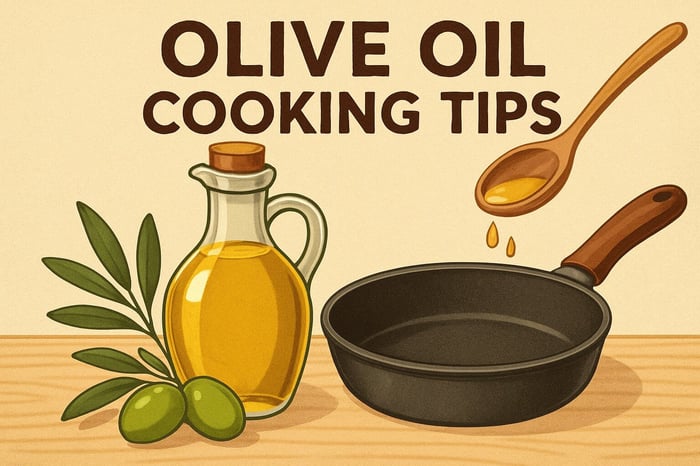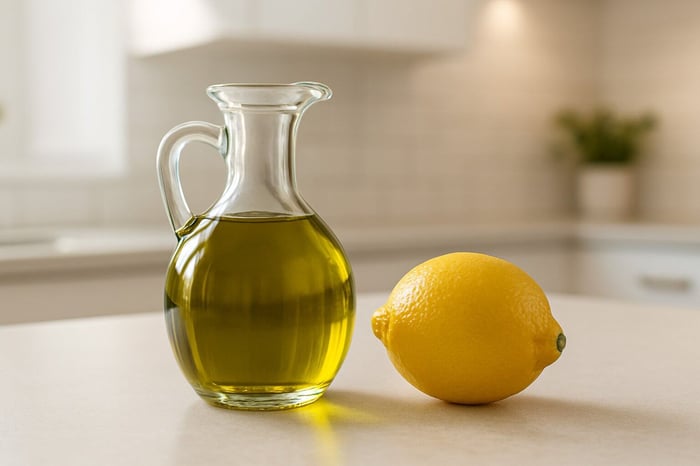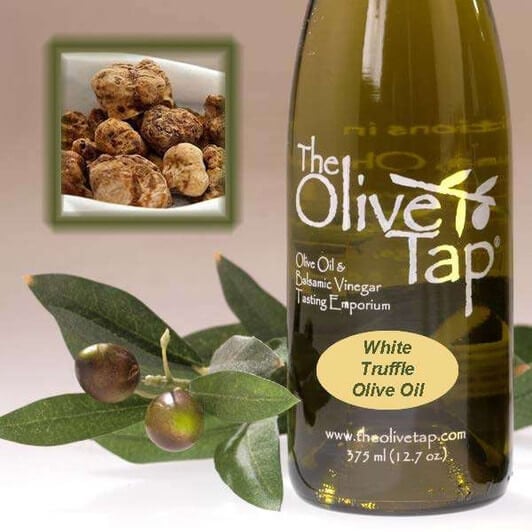Our Blog
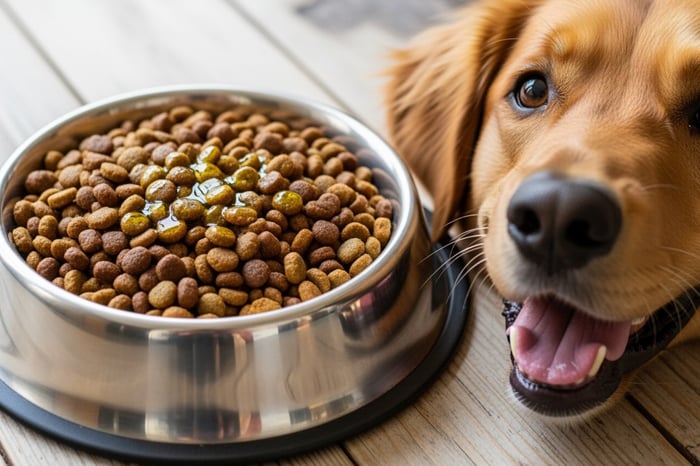
Can I Feed My Dog Olive Oil: A Guide to Healthy Drizzles
Table of Contents
- Is Olive Oil a Safe Treat for Your Pooch?
- The Ultimate Guide: Can I Feed My Dog Olive Oil?
- The Pawsitive Perks: Health Benefits of Olive Oil for Dogs
- Potential Pitfalls: Risks and Side Effects to Watch For
- Choosing the Best Bottle: What Type of Olive Oil is Best?
- Portion Control for Pups: How Much Olive Oil Can I Feed My Dog?
- Serving Suggestions: How Can I Feed My Dog Olive Oil?
- Beyond the Drizzle: When to Call the Vet
- Conclusion: A Healthy Drizzle for Your Dog
- FAQs
Is Olive Oil a Safe Treat for Your Pooch?
Can I feed my dog olive oil? Yes, you can safely feed your dog olive oil in moderation. This kitchen staple offers several health benefits for dogs when given properly, but there are important safety guidelines to follow.
Quick Answer for Dog Owners:
- Safe Amount: 1 teaspoon per 20 pounds of body weight daily
- Best Type: Extra virgin olive oil (EVOO)
- Method: Mix into food, don't give directly
- Benefits: Healthier skin, shinier coat, better digestion
- Risks: Weight gain, pancreatitis if overfed
- Rule: Consult your vet first
Many dogs find olive oil tasty, but it's crucial to offer it in moderation due to its high fat content. A single tablespoon contains 120 calories and 14 grams of fat—a significant amount that can contribute to weight gain, especially for smaller dogs. Note: Nutritional Information from The Olive Tap.
The Mediterranean diet connection isn't just for humans. The same healthy monounsaturated fats and antioxidants that benefit people can also support your dog's health. But unlike tossing olive oil on your salad, feeding it to your furry friend requires careful portion control and veterinary guidance.
The key is understanding both the benefits and the boundaries. Too little won't provide benefits, but too much can cause serious digestive issues or weight gain.
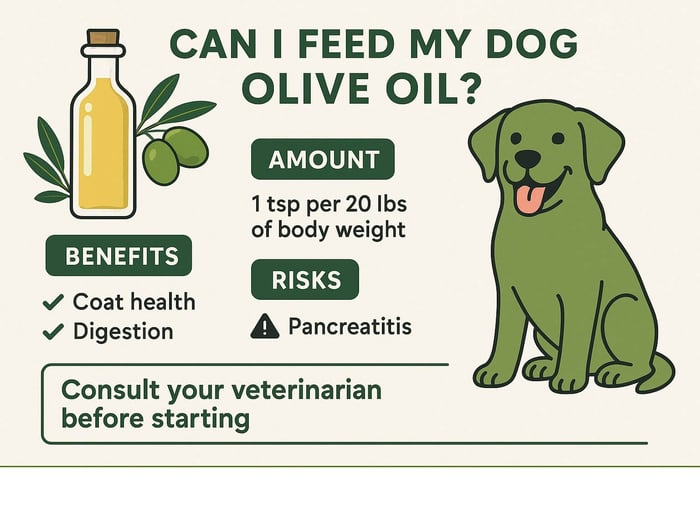
The Ultimate Guide: Can I Feed My Dog Olive Oil?
When added correctly to your dog's diet, olive oil can be a healthy addition. But just like with humans, there's a right way and a wrong way to go about it. Think of it as a natural supplement for dogs, packed with beneficial compounds. However, understanding the proper amounts, choosing the right type, and knowing what to watch for is crucial for your dog's safety.
The Pawsitive Perks: Health Benefits of Olive Oil for Dogs
When you add olive oil to your dog's diet correctly, you're giving them a boost to better health.
The Power of Good Fats
The star players are monounsaturated fats. These healthy fats provide energy and help absorb essential fat-soluble vitamins (A, D, E, and K) that keep your pup's body running smoothly.
A Coat That Shines
One of the most noticeable benefits is improved skin and coat health. Olive oil's vitamin E, phytonutrients, and omega-3 fatty acids act as internal moisturizers. For dogs with dry, flaky skin or a dull coat, a small daily dose can be a game-changer. It typically takes about 30 days of consistent use to see significant improvements. Scientific research on canine skin health supports observations about fatty acids contributing to healthy skin in dogs.
Nature's Defense System
Olive oil is bursting with antioxidants, like polyphenols, which act as bodyguards against harmful free radicals. These compounds combat oxidative stress, a factor in aging and disease. The oleocanthal found in Extra Virgin Olive Oil also offers anti-inflammatory properties, which can improve comfort and mobility for dogs with joint stiffness.
Supporting the Whole Dog
The benefits extend to:
- Immune System Support: Its rich antioxidant profile strengthens natural defenses. Canine studies on antioxidants show how these compounds support overall health.
- Joint Health: Oleic acid helps senior or active dogs.
- Digestive Health: It can ease mild constipation, and its taste can entice picky eaters.
- Cognitive Benefits: Polyphenols may help keep senior dogs mentally sharp.
Potential Pitfalls: Risks and Side Effects to Watch For
While beneficial, moderation is essential. Too much of a good thing can cause problems. Of course, check with your Veterinarian to see if EVOO is right for your pooch!
The Calorie Reality
A single tablespoon of olive oil contains 120 calories and 14 grams of fat. This can quickly lead to weight gain and obesity-related issues like diabetes and joint problems. Remember the 10% rule: treats and supplements should not exceed 10% of your dog's total daily calories.
The Pancreatitis Threat
The most serious risk is pancreatitis, a dangerous inflammation of the pancreas triggered by high-fat foods. It causes severe pain, vomiting, and diarrhea. Dogs with sensitive stomachs are especially vulnerable, so it's crucial to introduce olive oil gradually.
Digestive Drama
Too much olive oil can also cause general digestive upset like diarrhea and vomiting. If you see these signs, reduce the amount or stop giving it and consult your vet once again.
Choosing the Best Bottle: What Type of Olive Oil is Best?
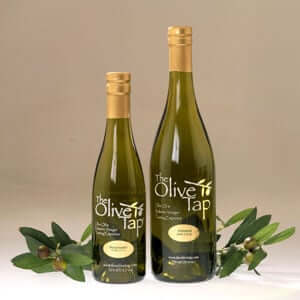 Only 100% EVOOs - No Flavor Infused Olive Oils for Dogs!
Only 100% EVOOs - No Flavor Infused Olive Oils for Dogs!Not all olive oils are created equal, so choosing the right one for your dog is key.
Extra Virgin is Extra Special
The gold standard is Extra Virgin Olive Oil (EVOO). It's the purest, least processed form, made using a cold-pressed method that preserves nutrients and antioxidants. Look for "cold-pressed" on the label and low acidity levels, which indicate high quality.
Bottle Shopping Like a Pro
Shop like a pro: choose dark or tinted glass bottles to protect the oil from light. Ensure there are no added ingredients. Flavored or infused oils are a no-go, as ingredients like garlic and onions are toxic to dogs. Stick to pure, unadulterated olive oil. For premium options that meet these standards, The Olive Tap offers an excellent selection of award-winning Extra Virgin Olive Oils.
Skip the "light" olive oil, "pure" olive oil, or pomace varieties. These have been processed more heavily and lost many, if not all of their beneficial compounds.
Portion Control for Pups: How Much Olive Oil Can I Feed My Dog?
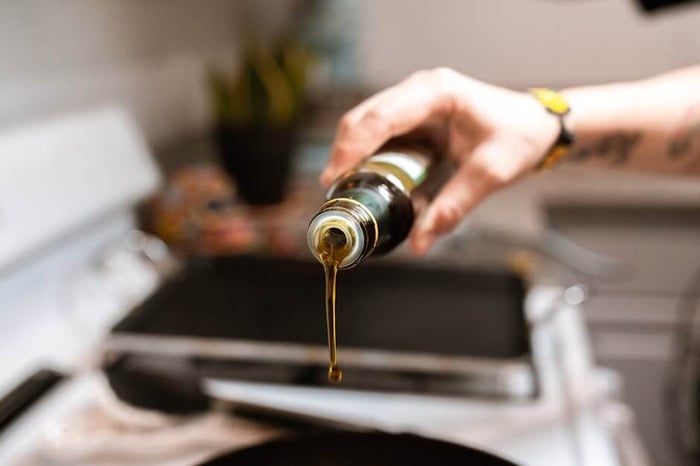
Proper dosage is key to reaping benefits without risking problems.
The Golden Rule of Dosing
The widely accepted guideline is 1 teaspoon per 20 pounds of body weight daily. A 10-pound dog would get about half a teaspoon, while a 40-pound dog could handle two teaspoons. For giant breeds over 80 pounds, you might work up to a tablespoon, but always in consultation with your vet.
Start Small, Think Big
Always start small, with about a quarter of the recommended dose, and increase gradually over a week. This lets your dog's system adjust. Remember the high calorie count (120 per tablespoon) and factor it into their daily intake. According to the Association of American Feed Control Officials (AAFCO), adult dogs need a minimum of 5.5% of their calories from fat (Source: AAFCO). A vet consultation is essential if your dog is overweight or has health issues.
Serving Suggestions: How Can I Feed My Dog Olive Oil?
Serving olive oil is simple with a few smart strategies.
The Mix-and-Match Method
The safest method is to mix it directly with their food. Drizzle the measured amount over kibble or wet food and stir well to ensure even distribution.
Creative Serving Ideas
- Drizzle over kibble: The simplest approach.
- Stir into wet food: Ensures complete integration.
- Incorporate into homemade dog treats: A healthy fat substitute in dog-safe recipes.
- Combine with plain yogurt: An occasional special treat.
What NOT to Do
Never give olive oil straight from a spoon, and avoid applying it topically.
Skip the Topical Application
Applying olive oil topically is not recommended. Your dog will likely lick it off, leading to uncontrolled consumption. An oily coat also attracts dirt and can cause skin irritation. The benefits for skin and coat are best achieved when olive oil is consumed orally—it's safer, cleaner, and more effective.
Beyond the Drizzle: When to Call the Vet
Knowing when to call the vet is crucial for your dog's safety.
Before You Start
Consult your vet first, especially if your dog is overweight, has chronic health conditions, is on medication, or is a puppy or senior.
Red Flag Symptoms
Watch for signs of overdose: vomiting, diarrhea, lethargy, loss of appetite, or abdominal pain (like a hunched posture). Yellowish gums or skin can indicate a severe issue like pancreatitis and require immediate attention.
When to Act Fast
If you see severe vomiting, persistent diarrhea, or intense abdominal pain, contact your vet immediately. Pancreatitis is a medical emergency. For mild upset, you can try withholding food (with vet approval), but persistent symptoms require professional care. Your vet is your best partner in keeping your dog healthy.
Conclusion: A Healthy Drizzle for Your Dog
So, can you feed your dog olive oil? Yes, but moderation is key. As we've seen, olive oil offers an impressive range of benefits, from a shinier coat and healthier joints to a boosted immune system and better digestion, thanks to its monounsaturated fats and antioxidants.
The golden rules are simple: Stick with high-quality Extra Virgin Olive Oil. The purity and nutrient density of a premium oil make the difference between a beneficial supplement and empty calories.
Remember the dosage: one teaspoon per 20 pounds of body weight daily. Start with a smaller amount, always mix it into their food, and monitor for any digestive upset.
Crucially, olive oil is a supplement, not a replacement for a balanced diet. The extra calories (120 per tablespoon) can lead to weight gain, so it should be treated as an addition, not a staple.
Your veterinarian remains your best ally. Every dog is unique, with their own health history and nutritional needs. A quick chat with your vet before introducing olive oil ensures you're making the best decision for your specific furry family member.
With care, proper dosing, and your vet's approval, a little olive oil can be a wonderful addition to your dog's diet, contributing to their health and happiness.
Sources:
- The Olive Tap Nutrition Information on EVOO: 120 calories per tablespoon
- AAFCO Dog Food Nutrient Profiles: AAFCO Official Publication
- Scientific research as linked above
FAQs
Do I have to buy the "good olive oil" for my dog as it can be expensive?
If you want to realize the various health benefits, just like us humans, yes, you should purchase the quality, EVOO. use the same guidelines on quality products for Fido. Of course, with any change in your dogs diet, please consult with your Veterinarian before adding EVOO to their food.
What are the true benefits of EVOO for my dog?
The benefits are abound including support for the immune system, joint health, digestive health including easing constipation, cognitive enhancements and more.
How do I get started adding EVOO to my dogs diet?
1. Consult with your Veterinarian and develop a plan.
2. Begin the plan based on the dosages recommended by your vet.
3. Monitor your furry friend for any side effects and consult with your vet.
4. Follow-up with your vet regarding improvements in your pet's health.
5. Adjust the plan accordingly!

